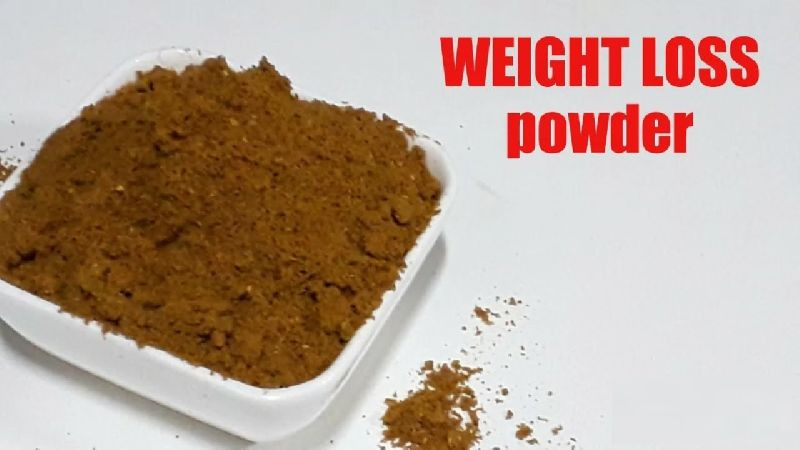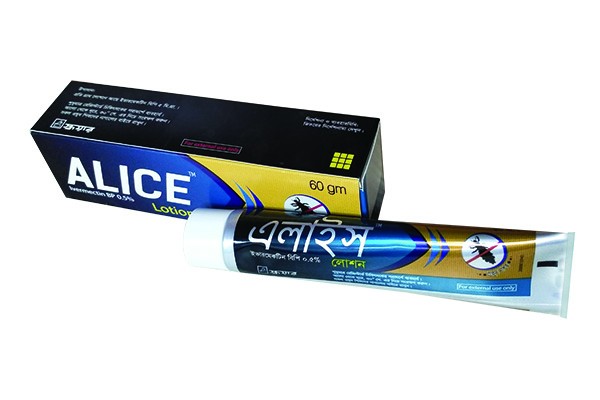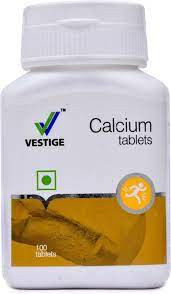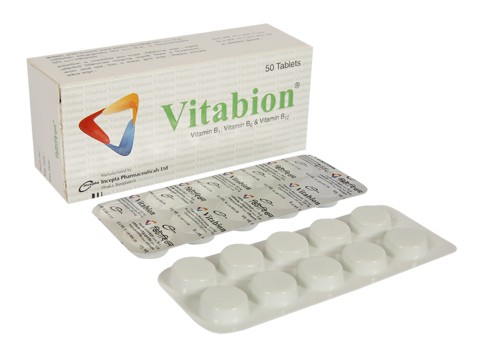
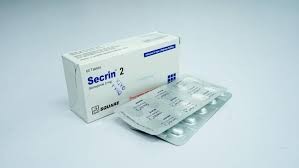


Secrin Tablet 2 mg (10Pcs)
Inhouse product
-
৳1,030.00
৳1,550.00 -
৳10.00
৳12.00 -
৳280.00
৳500.00 -
৳127.00
৳132.00 -
৳900.00
৳1,300.00 -
৳112.00
৳120.00
Reviews & Ratings
Indications
Glimepiride is indicated as an adjunct to diet to lower the blood glucose in patients with non-insulin-dependent diabetes mellitus (type 2 diabetes) whose hyperglycemia cannot be controlled by diet, physical exercise and weight reduction.
Glimepiride is also indicated for use in combination with Insulin to lower blood glucose in patients whose hyperglycaemia can not be controlled by diet and exercise or in conjunction with an oral hypoglycaemic agent.
Therapeutic Class
Sulfonylureas
Pharmacology
Glimepiride stimulates the insulin release from pancreatic β-cells and reduces glucose output from the liver. It also increases insulin sensitivity at peripheral target sites.
Dosage
In principle, the dosage of Glimepiride is governed by the desired blood sugar level. The dosage of Glimepiride must be the lowest which is sufficient to achieve the desired metabolic control.
The initial and the maintenance doses are set based on the results of regular checking of glucose in blood and urine. Monitoring of glucose levels in blood and urine also serves to detect either primary or secondary failure of therapy.
Initial dose and dose titration: Usual initial dose is 1 mg once daily. If necessary, the daily dose can be increased. Any increase can be based on regular blood sugar monitoring, and should be gradual, i.e., at intervals of one to two weeks and carried out step wise at follows: 1 mg-2 mg-3 mg-4 mg-6 mg.
Dose range in patients with well controlled diabetes: Usual dose range in patients with well controlled diabetes is 1 to 4 mg daily.
Distribution of doses: Timing and distribution of doses are decided by the physician, in consideration of the patient’s current life style. Normally, a single daily dose is sufficient. This should be taken immediately before a substantial breakfast or – if none is taken – immediately before the first main meals. It is very important not to skip meals after taking the drug.
Secondary dosage adjustment: As the control of diabetes improves, sensitivity to insulin increases; therefore, Glimepiride requirement may fall as treatment proceeds. To avoid hypoglycaemia, timely dose reduction or cessation of Glimepiride therapy must be considered.
A dose adjustment must also be considered whenever the patient’s weight or life style changes, or other factors arise which cause an increased susceptibility to hypo- or hyperglycaemia.
Changeover from other oral antidiabetics to Glimepiride: There is no exact dosage relationship between Glimepiride and other oral blood sugar lowering agents. When substituting Glimepride for other such agents, the initial daily dose is 1 mg; this applies even in changeover from the maximum dose of other oral blood sugar lowering agents. Any dose increase should be in accordance with guideline given above in initial dose and dose titration.
Consideration must be given to the potency and duration of action of the previous blood sugar lowering agent. It may be necessary to interrupt treatment to avoid additive effects which would increase the risk of hypoglycaemia.
Administration
Diaryl tablet must be swallowed without chewing and with sufficient amount of liquid (approximately ½ glass).
Interaction
Potentiation of the blood-sugar-lowering effect may occur with Insulin and other oral anti-diabetics, ACE inhibitors, Allopurinol, anabolic steroids and male sex hormones, Chloramphenicol, coumarin derivatives, Fluoxetine, MAO inhibitors, Miconazole, Para-aminosalicyclic acid, Pentoxifylline (high dose parenteral), Phenylbutazone, Oxyphenbutazone, quinolones, salicylates, sulphonamides, tetracyclines, β blockers.
Weakening of the blood-sugar-lowering effect may occur with Acetazolamide, barbiturates, corticosteroids, Diazoxide, diuretics, Epinephrine and other sympathomimetic agents, laxative, oestrogens and progestogens, phenothiazines, Phenytoin, Rifampicin, and thyroid hormones.
H2 -receptor antagonists, Clonidine and Reserpine may lead to either potentiation or weakening of the blood-sugar-lowering effect.
Both acute and chronic alcohol intake may potentiate or weaken the blood-sugar-lowering action of Glimepiride unpredictably.
Contraindications
Glimepiride is not suitable for the treatment of insulin dependent (type-I) diabetes mellitus, or of diabetic pre-coma or coma. Glimepiride must not be used in patients hypersensitive to Glimepiride or other sulphonylureas.
Side Effects
Hypoglycaemia, temporary visual impairment, nausea, vomiting, diarrhoea, abdominal pain, urticaria & fall in blood pressure.
Pregnancy & Lactation
Pregnancy: Glimepiride must not be taken during pregnancy; a changeover to Insulin is necessary. Patients planning a pregnancy must inform their physician, and should be shifted to Insulin.
Lactation: Ingestion of Glimepiride with breast milk may harm the child. Therefore, Glimepiride must not be taken by lactating women. Either a changeover or a complete discontinuation of breast-feeding is necessary.
Precautions & Warnings
In the initial weeks of treatment, the risk of hypoglycaemia may be increased and necessitates careful monitoring. If such risk is present it may be necessary to adjust the dosage of Glimepiride. Hypoglycaemia can almost always be promptly controlled by immediate intake of carbohydrates (glucose or sugar, e.g., sugar sweetened fruit juice or sugar sweetened tea)
Use in Special Populations
Pediatric use: Safety and effectiveness in pediatric patients have not been established.
Geriatric use: No overall differences in safety or effectiveness were observed between elderly and adult subjects, but greater sensitivity of some older individuals cannot be ruled out. The drug is known to be substantially excreted by the kidney, and the risk of toxic reactions to this drug may be greater in patients with impaired renal function. Because elderly patients are more likely to have decreased renal function, care should be taken in dose selection, and it may be useful to monitor renal function.
Use in renal insufficiency: A starting dose of 1 mg glimepiride may be given to NIDDM patients with kidney disease, and the dose may be titrated based on fasting blood glucose levels.
Use in hepatic insufficiency: No studies were performed in patients with hepatic insufficiency. Adverse reactions: Hypoglycemia. Adverse events, other than hypoglycemia, are dizzines, asthenia, headache, and nausea.
Overdose Effects
Accidental or intentional overdose may cause severe and prolonged hypoglycemia which may be life-threatening. In case of overdosage with Glimepiride, a doctor must be notified immediately. At the first signs of hypoglycemia, the patient must immediately take sugar, preferably glucose, unless a doctor has already started care.
Storage Conditions
Store at 25° C.
Frequently Bought Products
-
৳1,030.00
৳1,550.00 -
৳10.00
৳12.00 -
৳280.00
৳500.00 -
৳127.00
৳132.00 -
৳900.00
৳1,300.00 -
৳112.00
৳120.00
Online Shopping Bangladesh : MShopBD-Majumder Shop
MShopBD-Majumder Shop Online Shopping in Bangladesh is the Best Shopping store within 10000+ products cash on delivery in dhaka, Khulna, ctg & all over Bangladesh with COD-cash on delivery (Only Shipping Cost Advance ) under by www.esdp.gov.bd (bangladesh.gov.bd ) Home Delivery all Over Bangladesh different location and shop as like as Multivendor Online Sites in BD.
Thank you for choosing MShopBD - Majumder Shop!
